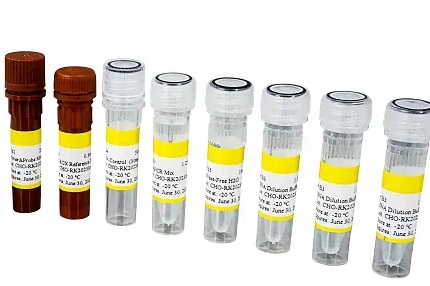E01A0516 Human Apolipoprotein C3 ELISA kit
The Human Apolipoprotein C3 ELISA kit can be used to identify samples from the human species. Apolipoprotein C3 can also be called APOC3, ApoC III, ApoCIII, Apolipoprotein C III, Apolipoprotein C3.


E01A0516 Human Apolipoprotein C3 ELISA kit
The Human Apolipoprotein C3 ELISA kit can be used to identify samples from the human species. Apolipoprotein C3 can also be called APOC3, ApoC III, ApoCIII, Apolipoprotein C III, Apolipoprotein C3.
Product Information | |
Cat. No. | E01A0516 |
Product Name | Human Apolipoprotein C3 ELISA kit |
Species | Human |
Product Size | 48 Tests / 96 Tests |
Concentration | 250-5000 ng/ml |
Sensitivity | 1.0 ng/ml |
Principal | Competitive ELISA |
Sample Volume | 100 ul |
Sample Type | Serum, plasma, cell culture supernatants, body fluid and tissue homogenate |
Assay Time | 90 minutes |
Platform | Microplate Reader |
Conjugate | HRP |
Detection Method | Colorimetric |
Storage | 2-8°C |
Kit Components | ||
MATERIALS | SPECIFICATION | QUANTITY |
MICROTITER PLATE | 96 wells | stripwell |
ENZYME CONJUGATE | 6.0 mL | 1 vial |
STANDARD A (0.5mL) | 0 ng/mL | 1 vial |
STANDARD B (0.5mL) | 250 ng/mL | 1 vial |
STANDARD C (0.5mL) | 500 ng/mL | 1 vial |
STANDARD D (0.5mL) | 1000 ng/mL | 1 vial |
STANDARD E (0.5mL) | 2500 ng/mL | 1 vial |
STANDARD F (0.5mL) | 5000 ng/mL | 1 vial |
SUBSTRATE A | 6 mL | 1 vial |
SUBSTRATE B | 6 mL | 1 vial |
STOP SOLUTION | 6 mL | 1 vial |
WASH SOLUTION (100 x) | 10 mL | 1 vial |
BALANCE SOLUTION | 3 mL | 1 vial |
Principle of the Assay |
APOC3 ELISA kit uses an anti-APOC3 antibody and an APOC3-HRP conjugate in a competitive enzyme immunoassay method. APOC3-HRP conjugate is incubated with the assay sample and buffer in a pre-coated plate for one hour. The wells are decanted and washed five times when the incubation period is over. The HRP enzyme substrate is then incubated in the wells. The result of the enzyme-substrate reaction is a complex that is blue in hue. The process is finally stopped by adding a stop solution, causing the solution to turn yellow. In a microplate reader, the color intensity is measured spectrophotometrically at 450 nm. Due to competition for the anti-APOC3 antibody binding site between APOC3 from samples and APOC3-HRP conjugate, the intensity of the color is inversely proportional to the concentration of APOC3. Since the number of sites is limited, as more sites are occupied by APOC3 from the sample, fewer sites are left to bind APOC3-HRP conjugate. A standard curve is plotted relating the intensity of the color (O.D.) to the concentration of standards. The APOC3 concentration in each sample is interpolated from this standard curve. |
Coefficient of Variance | Intra Variation% <10% | |
Inter Variation% <12% | ||
Recovery | 95-102% | |
Linearity | Diluent Ratio | Range % |
1:2 | 93-105 | |
1:4 | 88-106 | |
1:8 | 86-108 | |
Specificity/Cross-reactivity | No significant cross-reactivity or interference between APOC3 and analogues was observed. | |




E01A0516 has been referenced in the below publications:
Lack of association between apolipoprotein C3 gene polymorphisms and risk of nonalcoholic fatty liver disease in a Chinese Han population.
Association between APOC3 promoter region polymorphisms and non-alcoholic fatty liver disease.
Related Bluegene Biotech Products
BlueGene Biotech News



